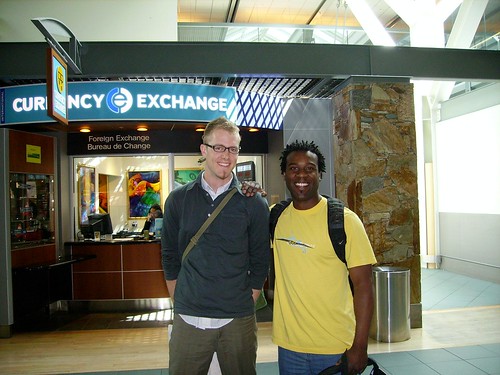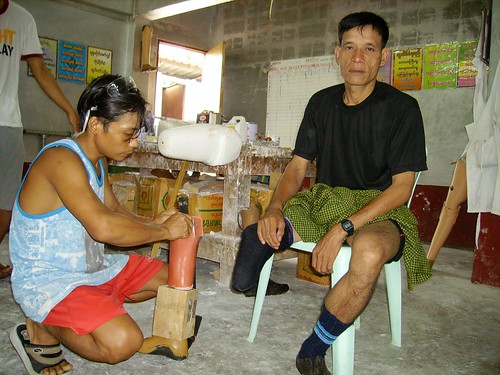But the recent presentation to CPI of the Certificate of Merit from the Provincial People�s Committee of Quang Tri was different to me. It was a real milestone in our seven-year history as a humanitarian mine action organization.
It was a chance to stop climbing for a moment, turn around and look down to see how far we�ve come with the commitment of our donors, the dedication of our staff and the unwavering support of our local partners, in particular the Quang Tri PC.
Vietnam is where we started and it�s still by far our largest program. Quang Tri, the central province most heavily affected by the war in Vietnam, is where it all began.
The Certificate of Merit recognizes international organizations for their assistance to Vietnamese people in need. In Quang Tri, we�ve served 3,204 beneficiaries and spent nearly $860,000 on survivor assistance programs. Next year, we�ll serve 1,040 in the province.
 In Vietnam as a whole, we�ve served 4,664 people impacted by ordnance accidents and their family members in 14 provinces since 2001. They are people such as Do, a log trucker from Hue who lost part of his right hand and eyesight when he tried to free his truck from a muddy road two years ago and an unseen piece of ordnance war-era ordnance exploded.
In Vietnam as a whole, we�ve served 4,664 people impacted by ordnance accidents and their family members in 14 provinces since 2001. They are people such as Do, a log trucker from Hue who lost part of his right hand and eyesight when he tried to free his truck from a muddy road two years ago and an unseen piece of ordnance war-era ordnance exploded.Clear Path paid for his eye operation and glasses, then gave him a $250 grant to start raising rabbits in a narrow space behind his family�s house where he built a roof and cages for the breeding project.
Do�s wife is the main breadwinner, making and selling a local noodle product. But Do�s rabbit sales, which are still modest but expected to grow quickly each year, boosts the couple monthly�s income by 20 percent and strengthens the shy survivor�s self esteem.
�I feel I am contributing to my family,� he told me. �I feel useful.�
In 2001, our first full year of survivor assistance, we served 199 people. This year, we�ve served 1,428. Our assistance to new accident survivors expanded quickly to most of central Vietnam, while our comprehensive medical and socio-economic support to existing survivors (injured since the end of the war in 1975) extends to beneficiaries in four districts north and south of the former Demilitarized Zone.
Besides the growing financial backing from many grassroots donors each year, we�ve secured steady funding from the United Nations Association�s Adopt-A-Minefield campaign, the U.S. State Department and the McKnight Foundation.
 Recently, we signed an agreement with the International Trust for Demining & Victims Assistance in Europe for their support in Vietnam. ITF International Relations Director Iztok Hocevar is traveling with me to Vietnam and Cambodia to see our work first-hand. He attended yesterday�s ceremony.
Recently, we signed an agreement with the International Trust for Demining & Victims Assistance in Europe for their support in Vietnam. ITF International Relations Director Iztok Hocevar is traveling with me to Vietnam and Cambodia to see our work first-hand. He attended yesterday�s ceremony.In 2008, we�re planning to double the number of districts where we serve existing accident survivors and families. The new districts will be Dong Ha in Quang Tri, Quang Ninh in Quang Binh, A Luoi in Thua-Thien Hue and Dai Loc in Quang Nam � all heavily affected by accidents with wartime explosives.
Our core Vietnamese staff of five � Toan, Chi, Phuong, Nhi and Duc � have done an incredible job building our program in a country where the accident victims are as scattered throughout the countryside as the ordnance that was dropped and fired during the war and where the typhoon season can make project implementation very challenging. First they worked under the direction of Kristen Leadem, then Hugh Hosman and now on their own.
What started as a small project to help a few people has blossomed into large-scale effort to serve the innocent victims of the war�s destructive legacy. Yesterday�s ceremony was an occasion to take stock in that and realize that all of us linked to CPI � donors, staff and partners � are helping nearly 5,000 people recover and get on with their lives in this country.
And that�s the reason why I am writing about the Certificate of Merit. The recognition is for all of us.
Congratulations.



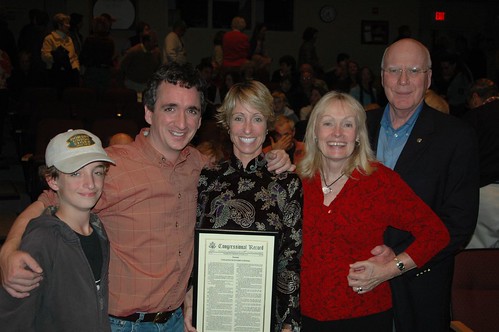
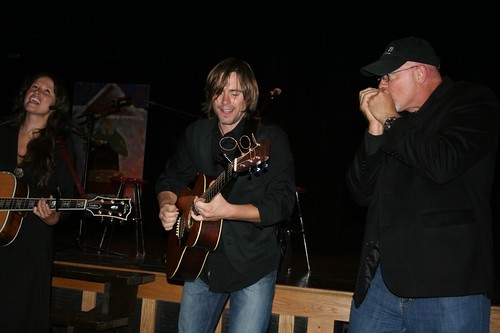


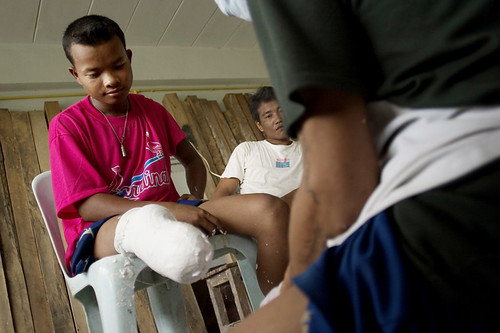


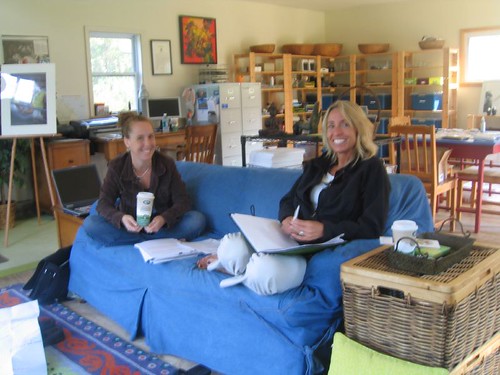










 KABUL, Afghanistan � Clear Path International (CPI), a U.S.-based humanitarian mine action nonprofit organization, has received a multi-year contract from DynCorp International to start a landmine survivor assistance program in Afghanistan on behalf of the U.S. Department of State.
KABUL, Afghanistan � Clear Path International (CPI), a U.S.-based humanitarian mine action nonprofit organization, has received a multi-year contract from DynCorp International to start a landmine survivor assistance program in Afghanistan on behalf of the U.S. Department of State.






 tire. In the rainy season there are new things to consider, such as when hitching a ride with one of these silly looking tractor-trucks that my Cambodian colleagues call "cow engine cars", how long will you wait until its full of people and ready to depart? Or, once at the site, how long should you wait for a truck to head back to town before starting to walk? Another debate I've had, is when sitting on top of a truck filled with rice, and the truck starts sliding towards the edge of the road and dangerously close to the marshy water, at which point do you jump - is it right before the truck goes over or is it a few seconds prior, to ensure you aren't trapped under all those kilos of rice? Of course, if you go too early, and the truck doesn't topple into the marsh - have you ruined your camera and embarrassed yourself for nothing? OK - maybe it wouldn't be for nothing. Its funny enough to see a barang (foreigner) on these trucks - I imagine one hurling themselves over the edge and into the water would be a good story for the other passengers.
tire. In the rainy season there are new things to consider, such as when hitching a ride with one of these silly looking tractor-trucks that my Cambodian colleagues call "cow engine cars", how long will you wait until its full of people and ready to depart? Or, once at the site, how long should you wait for a truck to head back to town before starting to walk? Another debate I've had, is when sitting on top of a truck filled with rice, and the truck starts sliding towards the edge of the road and dangerously close to the marshy water, at which point do you jump - is it right before the truck goes over or is it a few seconds prior, to ensure you aren't trapped under all those kilos of rice? Of course, if you go too early, and the truck doesn't topple into the marsh - have you ruined your camera and embarrassed yourself for nothing? OK - maybe it wouldn't be for nothing. Its funny enough to see a barang (foreigner) on these trucks - I imagine one hurling themselves over the edge and into the water would be a good story for the other passengers.


